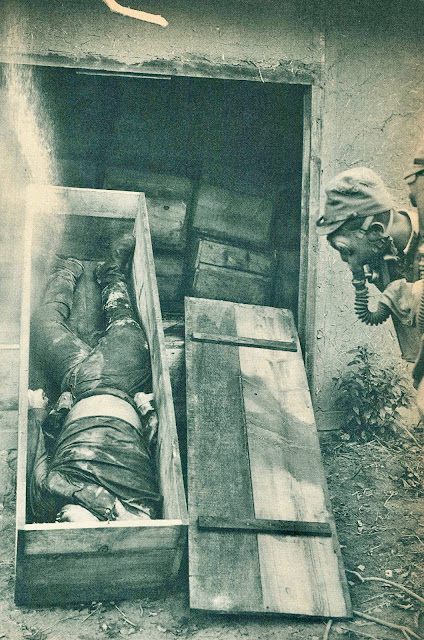The Zhang Gulbong Incident, a border dispute involving the Soviet Union, Manchuria, and Korea, broke out at Zhang Gulbong in the city of Hunchun in southeastern Manchuria between July 29 and August 11, 1938. In effect, it was a battle between the Japanese and Soviet armies, and the Soviet side called it the Hasan Lake Incident. The Japanese occupied Manchuria was also littered with the bodies of murdered Soviet Union soldiers. The Japanese soldiers inspecting the corpses wore gas masks to avoid the strong stench of death from the corpses. They did not want to be assumed to be corpses from a poison gas battle, so they were not allowed to be posted. The dead bodies of the war dead were immediately riddled with maggots. The corpses were quickly devoured and turned into white bones. As the bones turned white, holes appeared in the skulls where they had been shot.
The German-Japanese Anti-Comintern Pact signed on November 25, 1936 included a secret document on military alliance against the Soviet Union, which increased the tension on the border between Japan and the Soviet Union. Zhang Gulbong is a 150-meter-high hill in the area where Manchukuo territory is wedged between Imperial Korea and the Soviet Union, with the Tumen River flowing south to the west. As for the border line, Zhang Gulbong was mutually claimed by both sides; from July 6, 1938, Soviet troops invaded Zhang Gulbong and occupied it on July 11. From July 29 to August 11, Japanese and Soviet troops clashed with each other. In the ceasefire agreement on August 11, the Soviet Union confirmed the Japanese occupation of Zhangguofeng, and the two sides completed the retreat to the present border as agreed. Later, Soviet troops reoccupied the blank area, foreshadowing the Nomohan Incident.

